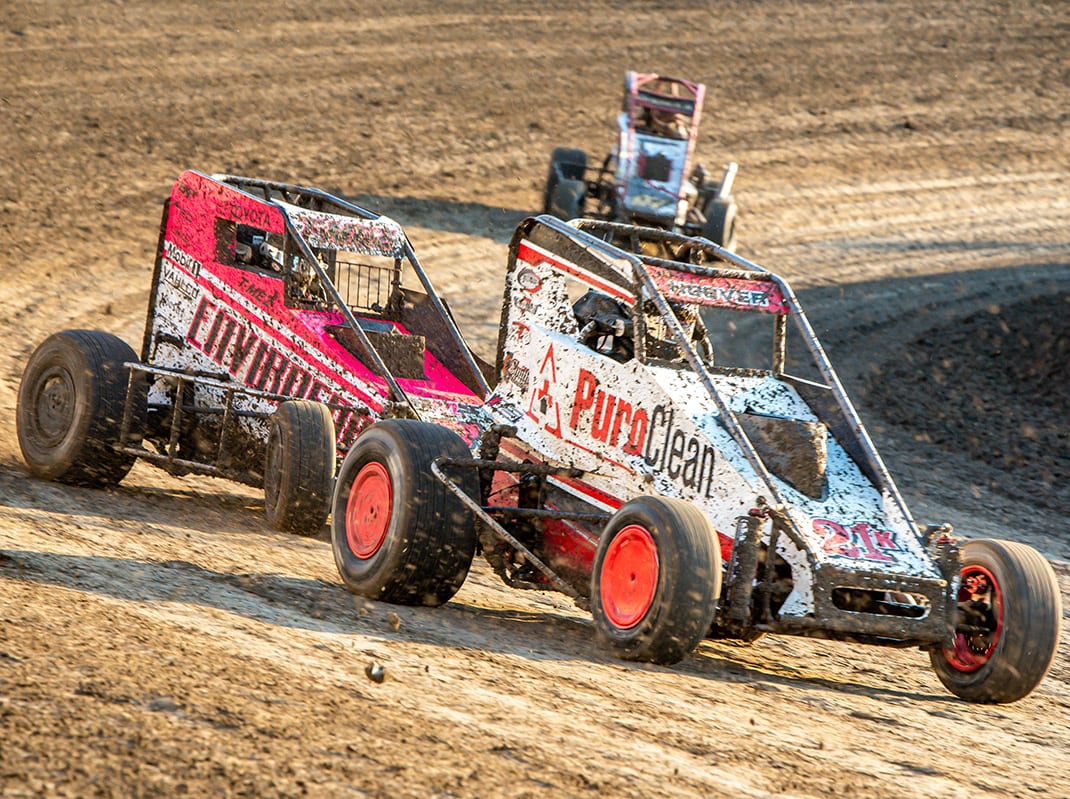Once racing resumed, Brown implemented procedural changes at the track.
“We had hand sanitizer and all the things the CDC recommended,” he said. “Normally our trailer was open to competitors. We shut things down and tried to social distance. When we came to driver registration, we had hand sanitizer. We had signs out for social distancing, to wear the masks. We couldn’t afford our staff to get sick. It’s hard in this industry not to go around shaking hands.
“We didn’t have to do any races without fans. I think that would have been tough, even though we have our own streaming service. The fans have been phenomenal,” Brown added. “They are at as much risk as the drivers are. The biggest thing we learned there is where our support is, the loyalty of the fans; where we think we’re stronger and where we’re not. We could figure it out based on the turnout at the events.
“There was not a lot going on, so a majority of people went to races for the first time. The outdoor entertainment, we were able to capitalize on it. Then our goal was to try to turn them into race fans, especially the younger fans. I have never seen the stands as strong as they are today. It’s kind of scary because we hope we get it back next year without the pandemic.”
Different areas of the country were hit more significantly. New York tracks were hampered by government regulations all year.
“For us in New York, it’s been quite a bit tighter from what we’ve seen in other areas of the country,” said Weedsport Speedway general manager Jimmy Phelps. “On-track operations, we’ve in essence shut down. The way New York state’s executive orders read we were not able to have any fan participation. It can’t be done without the fans, nor do we want to do it without the fans.
“Our governor is again, it’s not like he’s singled out short-track racing or motorsports in general. He’s taken the same path of action with sports. From the Buffalo Bills to high school. There are a million ways to look at it,” Phelps continued. “He’s taken a very aggressive approach to this and in a lot of ways all he’s really done is shut our state down. Other states have allowed tracks to come with plans and allowed them to bring some stuff to the table where they would listen.”
Phelps notes that the facility’s kartway has been able to host a couple of karting events because those are participant only.
“It’s tough without the revenues,” he said. “There are expenses. Weedsport’s property isn’t he easiest to maintain. Based off what we’ve seen, I think staying closed from a potential loss standpoint has been the best decision with the cards we’ve been dealt.”
Phelps, Knoxville (Iowa) Raceway race director and promoter John McCoy and Roger Slack, general manager of Ohio’s Eldora Speedway, told SPEED SPORT that many agreements with sponsors were rolled into next year. Slack added his team found a way to generate an extra $9,000 to $10,000 in selling hay to help offset some costs.
“These giant fields that we used at one time to grow some hay in the back of, we mow every week if not twice a week,” he said. “But ever since everything hit, we got to the point that we keep the stuff that’s closest to the speedway trimmed up and we let (the rest) grow.”
According to McCoy, two of the biggest things he learned during the pandemic-plagued season are what Knoxville Raceway’s true capacity should be given the circumstances and a new cleaning process that is more efficient.
“It’s not the 30 percent everyone decided on,” he said. “It’s more like 20 percent.
“We did have different bathroom cleaning techniques. We had a new cleaning crew. They went out and did some studies. They asked for some help to buy some equipment and sanitizing sprays. The cleaning process they found out was great and they will keep using it.”
The COVID-19 pandemic forced the racing industry to adapt quickly. It certainly hasn’t been seamless with different rules and regulations from state to state and even county to county. Some had it easier than others, but one thing is certain — nobody had it easy.
